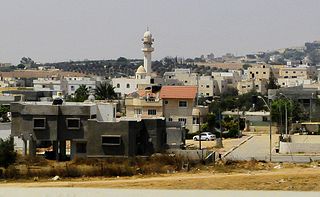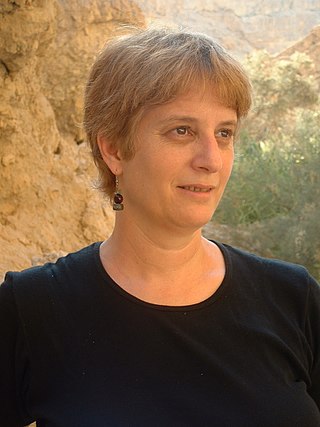Related Research Articles

American Sign Language (ASL) is a natural language that serves as the predominant sign language of Deaf communities in the United States of America and most of Anglophone Canada. ASL is a complete and organized visual language that is expressed by employing both manual and nonmanual features. Besides North America, dialects of ASL and ASL-based creoles are used in many countries around the world, including much of West Africa and parts of Southeast Asia. ASL is also widely learned as a second language, serving as a lingua franca. ASL is most closely related to French Sign Language (LSF). It has been proposed that ASL is a creole language of LSF, although ASL shows features atypical of creole languages, such as agglutinative morphology.

Sign languages are languages that use the visual-manual modality to convey meaning, instead of spoken words. Sign languages are expressed through manual articulation in combination with non-manual markers. Sign languages are full-fledged natural languages with their own grammar and lexicon. Sign languages are not universal and are usually not mutually intelligible, although there are also similarities among different sign languages.
Nicaraguan Sign Language is a form of sign language which developed spontaneously among deaf children in a number of schools in Nicaragua in the 1980s. It is of particular interest to linguists as it offers them a unique opportunity to study what they believe to be the birth of a new language.

German Sign Language or Deutsche Gebärdensprache (DGS), is the sign language of the deaf community in Germany, Luxembourg and in the German-speaking community of Belgium. It is unclear how many use German Sign Language as their main language; Gallaudet University estimated 50,000 as of 1986. The language has evolved through use in deaf communities over hundreds of years.
Home sign is a gestural communication system, often invented spontaneously by a deaf child who lacks accessible linguistic input. Home sign systems often arise in families where a deaf child is raised by hearing parents and is isolated from the Deaf community. Because the deaf child does not receive signed or spoken language input, these children are referred to as linguistically isolated.
Icelandic Sign Language is the sign language of the deaf community in Iceland. It is based on Danish Sign Language; until 1910, deaf Icelandic people were sent to school in Denmark, but the languages have diverged since then. It is officially recognized by the state and regulated by a national committee.
Indo-Pakistani Sign Language (IPSL) is the predominant sign language in the subcontinent of South Asia, used by at least 15 million deaf signers. As with many sign languages, it is difficult to estimate numbers with any certainty, as the Census of India does not list sign languages and most studies have focused on the north and urban areas. As of 2021, it is the most used sign language in the world, and Ethnologue ranks it as the 151st most "spoken" language in the world.
Providence Island Sign Language is a village sign language of the small island community of Providence Island in the Western Caribbean, off the coast of Nicaragua but belonging to Colombia. The island is about 15 square miles (39 km2) and the total population is about 5000, of which an unusual proportion are deaf.
Israeli Sign Language, also known as Shassi or ISL, is the most commonly used sign language by the Deaf community of Israel. Some other sign languages are also used in Israel, among them Al-Sayyid Bedouin Sign Language.
The grammar of American Sign Language (ASL) is the best studied of any sign language, though research is still in its infancy, dating back only to William Stokoe in the 1960s.

Al-Sayyid or al-Sayed is a Bedouin village in Israel. Located in the Negev desert between Arad and Beersheba and just south of Hura, it falls under the jurisdiction of al-Kasom Regional Council. In 2021 the village's population was 6,289.
Russian Sign Language (RSL) is the sign language used by the Deaf community in Russia and possibly Belarus and Tajikistan. It belongs to the French Sign Language family.
Nepalese Sign Language or Nepali Sign Language is the main sign language of Nepal. It is a partially standardized language based informally on the variety used in Kathmandu, with some input from varieties from Pokhara and elsewhere. As an indigenous sign language, it is not related to oral Nepali. The Nepali Constitution of 2015 specifically mentions the right to have education in Sign Language for the deaf. Likewise, the newly passed Disability Rights Act of 2072 BS defined language to include "spoken and sign languages and other forms of speechless language." in practice it is recognized by the Ministry of Education and the Ministry of Women, Children and Social Welfare, and is used in all schools for the deaf. In addition, there is legislation underway in Nepal which, in line with the UN Convention on the Rights of Persons with Disabilities (UNCRPD) which Nepal has ratified, should give Nepalese Sign Language equal status with the oral languages of the country.
In sign languages, the term classifier construction refers to a morphological system that can express events and states. They use handshape classifiers to represent movement, location, and shape. Classifiers differ from signs in their morphology, namely in that signs consist of a single morpheme. Signs are composed of three meaningless phonological features: handshape, location, and movement. Classifiers, on the other hand, consist of many morphemes. Specifically, the handshape, location, and movement are all meaningful on their own. The handshape represents an entity and the hand's movement iconically represents the movement of that entity. The relative location of multiple entities can be represented iconically in two-handed constructions.
A village sign language, or village sign, also known as a shared sign language, is a local indigenous sign language used by both deaf and hearing in an area with a high incidence of congenital deafness. Meir et al. define a village sign language as one which "arise[s] in an existing, relatively insular community into which a number of deaf children are born." The term "rural sign language" refers to almost the same concept. In many cases, the sign language is known throughout the community by a large portion of the hearing population. These languages generally include signs derived from gestures used by the hearing population, so that neighboring village sign languages may be lexically similar without being actually related, due to local similarities in cultural gestures which preceded the sign languages. Most village sign languages are endangered due to the spread of formal education for the deaf, which use or generate deaf-community sign languages, such as a national or foreign sign language.
A deaf-community or urban sign language is a sign language that emerges when deaf people who do not have a common language come together and form a community. This may be a formal situation, such as the establishment of a school for deaf students, or informal, such as migration to cities for employment and the subsequent gathering of deaf people for social purposes. An example of the first is Nicaraguan Sign Language, which emerged when deaf children in Nicaragua were brought together for the first time, and received only oral education; of the latter, Bamako Sign Language, which emerged among the tea circles of the uneducated deaf in the capital of Mali. Nicaraguan SL is now a language of instruction and is recognized as the national sign language; Bamako SL is not, and is threatened by the use of American Sign Language in schools for the deaf.
The Arab sign-language family is a family of sign languages spread across the Arab Middle East. Its extent is not yet known, because only some of the sign languages in the region have been compared.

Wendy Sandler is an American-Israeli linguist who is known for her research on the phonology of Sign Languages.

Irit Meir was an Israeli linguist, who specialized in the linguistics of sign languages. She was an associate professor in the Department of Hebrew Language and the Department of Communication Sciences and Disorders at the University of Haifa, and the associate director of the Sign Language Research Lab.
Cena is a village sign language used by 34 known deaf signers and many more hearing inhabitants of Várzea Queimada, a small, agricultural community in the sertão (scrubland) of Piauí, north-eastern Brazil. It is currently in its third generation of users.
References
- ↑ Al-Sayyid Bedouin Sign Language at Ethnologue (18th ed., 2015) (subscription required)
- 1 2 3 4 5 Fox, Margalit (2008). Talking Hands. New York, New York: Simon & Schuster Paperbacks.
- ↑ One in Twenty Haaretz, 2 June 2004
- 1 2 3 4 5 6 7 Sandler, Wendy; Aronoff, Mark; Meir, Irit; Padden, Carol (May 2011). "The gradual emergence of phonological form in a new language". Nat Lang Linguist Theory. 29 (2): 503–543. doi:10.1007/s11049-011-9128-2. PMC 3250231 . PMID 22223927.
- ↑ Kisch, Shifra. 2000. 'Deaf discourse': Social construction of deafness in a Bedouin community in the Negev. MA thesis, Tel Aviv University.
- ↑ The emergence of grammar: Systematic structure in a new language, Proceedings of the National Academy of Sciences, Wendy Sandler, Irit Meir, Carol Padden, and Mark Aronoff
- 1 2 Wade, Nicholas (February 1, 2005). "A New Language Arises, and Scientists Watch It Evolve". New York Times. Retrieved November 11, 2012.
- 1 2 3 4 Aronoff, Mark; Meir, Irit; Padden, Carol A.; Sandler, Wendy (January 1, 2008). "The roots of linguistic organization in a new language". Interaction Studies. 9 (1): 133–153. doi:10.1075/is.9.1.10aro. ISSN 1572-0373. PMC 3311507 . PMID 22448152.
- ↑ Sedivy, Julie. "The Unusual Language That Linguists Thought Couldn't Exist". Nautilus. Retrieved October 2, 2020.
- ↑ Tkachman, Oksana; Sandler, Wendy (December 31, 2013). "The noun–verb distinction in two young sign languages". Gesture. 13 (3): 253–286. doi:10.1075/gest.13.3.02tka. ISSN 1568-1475.